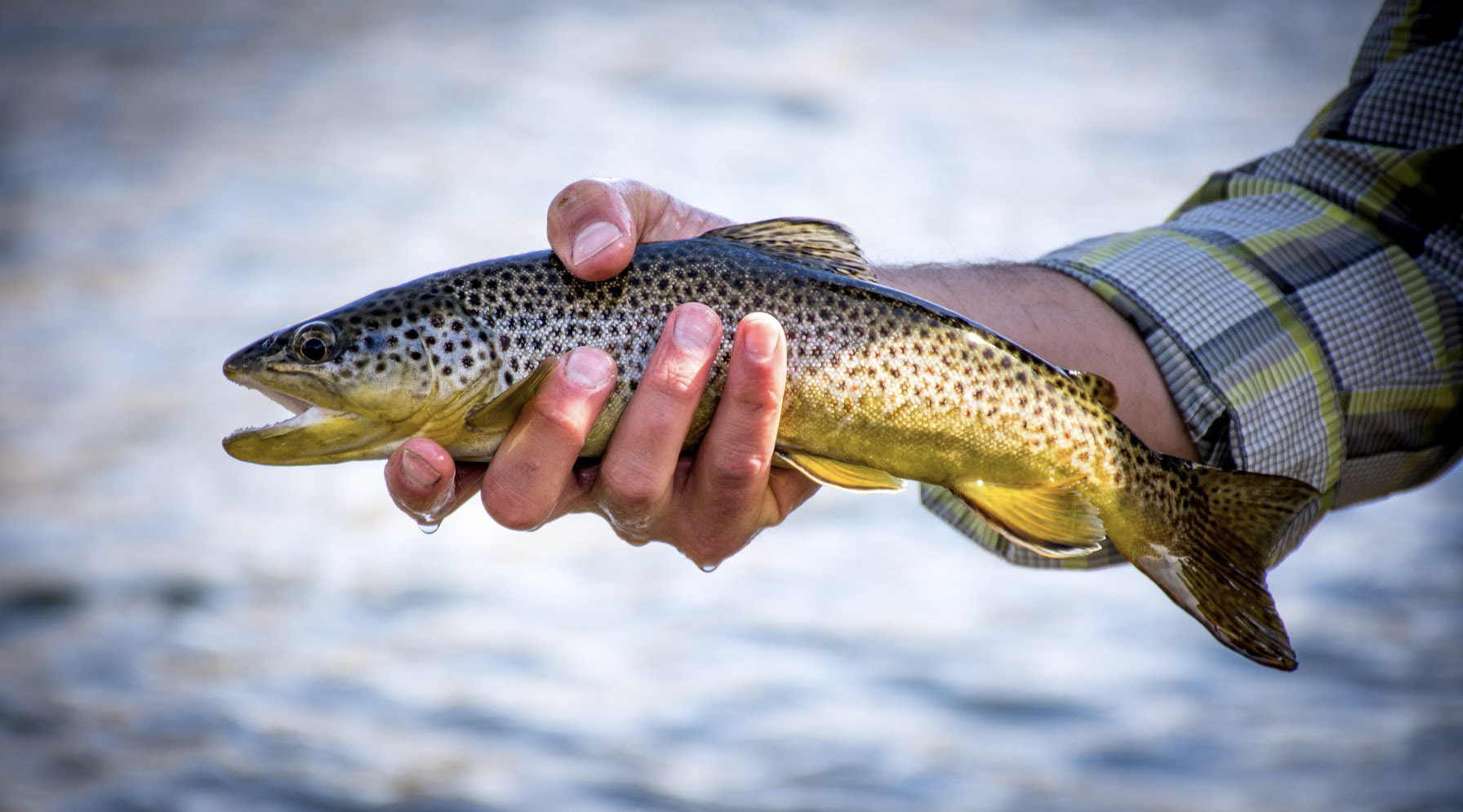Some of us harvest fish, some of us release, and some of us do a little bit of both depending on species and whether or not we have dinner plans. But now that the inaugural Endless Summer Tourney has kicked off, it’s a good time to talk “catch and release” tactics.
As all of you registered for the Tourney know, once you catch a species, you gotta release it. And while not all fish are created equal – some are a little hardier than others – these five tactics should help the fish you do land survive to see another day (and grow a little bigger for the next time they take your fly).

Here are 5 tactics to use when catching and releasing fish:
Pinch Your Barb
No, you won’t lose fish; yes, you’ll get the fish you do land, off easier. Once a fish takes your hook, the backwards-pointing barb helps it stay in place; creating a sharp bumper-like mechanism. Since barbs are intended to help keep fish on a hook, they make very difficult to easily slide a hook out of a fish’s mouth. By pinching your barbs down, you’re reducing the likelihood of having to cause any undue burden on fish. All you have to do is snag your favorite forceps – like the rad Loon HemoStat in the August Guide Postfly Box – position the barb of the hook between them, and squeeze. This will push the “barb” into the rest of the hook and allow you to easily slip the fly out of any fish’s mouth.
Keep them Wet
Fish survive by “breathing” the oxygen present in water through their gills. Ripping them out of their home environment into our atmosphere can be a little…shocking. When a fish takes a fly, they fight. And that fighting causes stress. After being stressed, they need time to recover; and according to the “keep ’em wet” principles, “holding a fish out of the water prevents recovery and can lead to death if done for too long. Even shorter durations (as little as 10-20 seconds for some species) can have serious effects on short-term and long-term fish health”. To increase a fish’s chances of survival, make sure to keep their faces and gills in the water. This will keep water and oxygen flowing and give them time to recoup from the fight.
Use a Net

If there is one piece of gear to add to your kit, it’s a net – maybe even the nearly-indestructible, made in the USA Rhino Net, perhaps? Ahem…
But why add a net to your kit, you ask? Because using onc can yield impressive results in your “landed” to “lost” fish ratios. And, staying in line with keeping a fish wet, a net will help keep fish in the water longer. Having a net on hand allows an angler to scoop a fish up, rather than fight to wrangle it with your hands. It also allows a safe place to measure, photograph and release – three boxes you’ll need to check for this year’s Tourney.

Skip the “Grip & Grin”

We get it: you’re stoked to land fish! We are too – but maybe you don’t need a shot with every fish you bring to the net. If you love snapping photos of your catch, consider something creative like a shot of the release or a quick photo at water level showcasing their scales, size, etc.
As mentioned above, pulling a fish out of water for 10 seconds or more can have detrimental effects. And when it comes to the Tourney, all we need is a shot with your official measuring tape – and you can do that while the fish is in your net. So go ahead and get toothy with your trophy catch, but consider keeping it near the water’s surface and remember to limit the amount of time that fish is out of water to under 10 seconds.

Don’t Run Fish Into the Ground
Playing a fish is fun – especially when it puts up a good fight – but if it’s so exhausted at the end of a fight that it won’t swim away, the fish’s survival odds are likely pretty bleak. When a fish takes your fly and you set your hook (and depending on the species, of course) don’t play it into the backing time after time after time. Reel it in, get your measurements/in-water shots, and let it go. If you do have to fight “the big one” longer than expected (especially trout), give the fish time to recoup while in the net. It’ll swim away when it’s ready.

Using catch and release practices helps fish live to see another day, grow a little bigger, and give you even more of a chase next time you hook ’em. Plus, as mentioned, it’s one of the criteria for the Endless Summer Tourney. To learn more or sign up, check out the Tournament page, tag your shots with #PFEndlessTourney and follow along on Instagram.
https://postflybox.com/blog/2019/08/29/whats-in-the-box-august-2019/
https://postflybox.com/blog/2019/08/27/5-trout-flies-to-try-when-you-fish-a-river-for-the-first-time/
https://postflybox.com/blog/2019/08/22/fly-retrieves-every-angler-should-know/

Based in southern Colorado, Ryan is a photographer, outdoorswoman, fish chaser, and proud mama to two wild Outdoors-loving kiddos. When not wrangling little ones or cattle dogs, you’ll find her on the water, on a trail or on the road looking for the next piece of water and (hopefully) high country trout.


One thought on “5 Catch and Release Tactics for Fly Anglers”